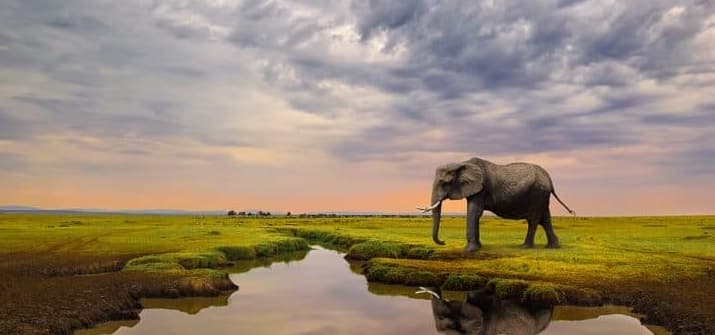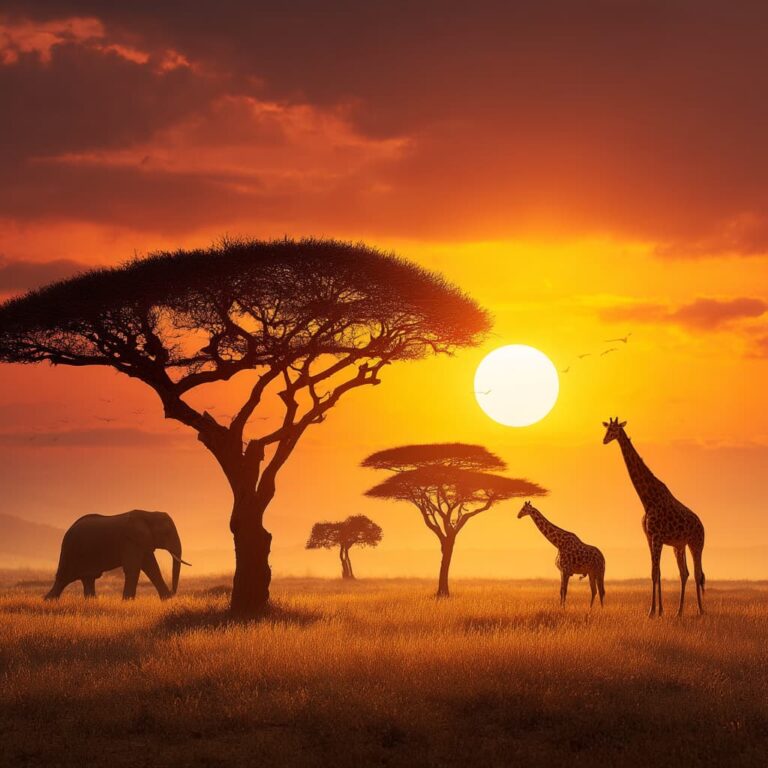A safari trip is a dream for many nature and exoticism lovers. Especially attractive is the opportunity to see the famous “Big Five” — lion, leopard, elephant, rhinoceros, and buffalo — the very animals many travel to Africa to witness. However, the typical image of safari is often associated with high expenses: expensive tours, flights, and luxury lodges. Yet, it is possible to see these magnificent creatures without spending a fortune. In this article, we will explain how to organize an affordable safari to get unforgettable experiences without emptying your wallet.
What is the Big Five and Why Is It So Popular?
The Big Five is a group of five large African animals considered symbols of the continent’s wildlife. Originally, the term was used by hunters to denote the most challenging and dangerous animals to hunt, but today “hunting” has turned into observing and photographing. Tourists from all over the world come to see the Big Five, creating high demand for safari tours.
Each animal has its unique appeal. The lion is the king of the savannah, the leopard is a mysterious and elusive hunter, the elephant is the largest land mammal, the rhinoceros is a rare and endangered species, and the buffalo is a powerful and unpredictable representative of African fauna. Watching them in their natural habitat is a special experience that is hard to forget.
Where to Arrange an Affordable Safari?
The most accessible way to see the Big Five is to visit national parks and reserves in countries where safari is well developed and affordable. South Africa, Kenya, and Tanzania have traditionally been leaders in organizing safaris, but there are more budget-friendly alternatives. For example, South Africa’s Kruger National Park is one of the largest and most popular, and with proper planning, visiting it doesn’t require huge expenses. Traveling independently by renting a car and staying in budget lodges or campsites can save a lot.
Kenya offers Maasai Mara National Reserve, where animal migrations and wildlife diversity amaze. Here, too, there are options for tourists with different budgets, including group tours and affordable accommodation. Tanzania with Serengeti and Ngorongoro is also a great destination but usually more expensive due to remoteness and infrastructure levels.
It is important to pay attention to less popular but equally interesting reserves, such as Addo or Pomala in South Africa, where safari prices are lower but chances to see the Big Five remain high.
How to Save on Flights and Accommodation?
Flights to Africa are often considered the most expensive part of the trip. To reduce costs, it is worth monitoring airfares early, using flexible dates, and looking for flights with stopovers, which can sometimes be cheaper. Also, European summer months coincide with Africa’s rainy season, which reduces tourist flow and prices for accommodation and tours.
Choosing accommodation is another way to save. Instead of expensive safari lodges, you can stay in guesthouses, B&Bs, or even campsites. Many national parks have designated camping areas with basic facilities, allowing not only to save money but also to have a more authentic nature experience.
Booking accommodation and safari packages in advance through trusted websites and platforms often provides access to deals and discounts. Sometimes local guides offer better prices than large tourist companies, so it is worth considering direct contact.
How to Organize a Budget Safari Independently?
One of the best ways to lower expenses is to plan the safari independently. Renting a four-wheel drive vehicle with GPS allows moving around the park without expensive tour operators. It is important to be prepared for such trips: learn park rules, routes, and safety measures.
Independent safari gives freedom to choose time and route and saves on guides and transfers. However, experienced guides help spot animals, tell about their behavior, and ensure safety, so for first-time travelers, booking at least a partial guided tour is advisable.
Moreover, tourists can join groups to share costs of car rental, fuel, and guide fees.
When is the Best Time for a Budget Safari?
Seasonality plays a key role in organizing an affordable safari. The high season is during dry months—from June to October—when animals gather near water sources and are easier to spot. This time is more expensive for tours and accommodation.
In the off-season, during rainy periods, prices drop, but animals spread over larger areas, and roads may become difficult to pass. Nevertheless, for those seeking savings, this is a great option, especially if comfort and absolute guarantee to see all animals are not priorities.
Also, the low season sees fewer tourists, adding privacy and allowing to enjoy nature without crowds.
Safety and Features of a Budget Safari
Safari is always associated with certain risks, especially on independent trips. It is recommended to carefully study national park rules, not to leave the vehicle without permission, keep distance from animals, and always have communication means at hand.
It is important to understand that budget safari does not mean giving up safety. Better to prepare in advance, get recommendations from local experts, and observe precautions. Sometimes saving on a professional guide may lead to additional expenses in unforeseen situations.
Conclusion
Seeing the Big Five is not necessarily an expensive adventure for the privileged. With the right approach, planning, and knowledge of nuances, you can organize an interesting and safe safari without spending a fortune. The main things are desire, readiness for adventure, and respect for wildlife. For Czech travelers who want to immerse themselves in the atmosphere of Africa, this is a real opportunity to make a dream come true without unnecessary expenses and get unforgettable impressions from meeting the greatest animals on the planet.


Average Rating